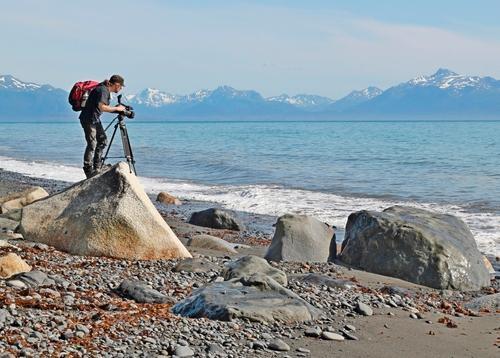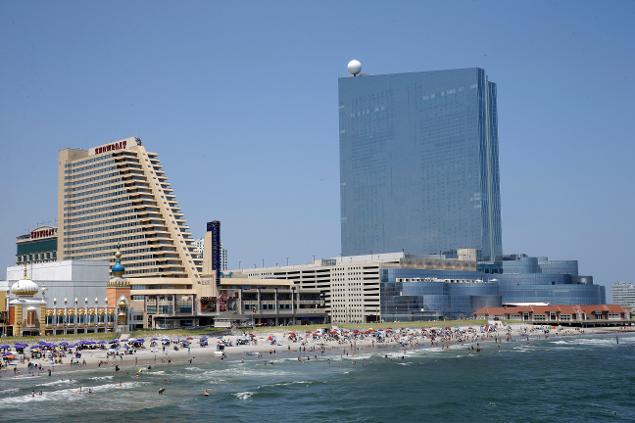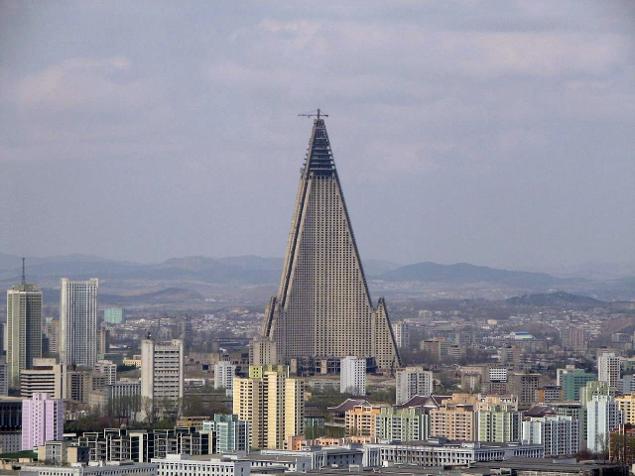Posted by Links and Tours Ltd
1) Great Barrier Reef, Australia
The world’s largest coral reef system, the Great Barrier Reef, is under threat from a recently approved coal port and may be downgraded by UNESCO as an endangered World Heritage Site.
But for now this 1,400m (2,300km) reef, which can be seen from outer
space, remains one of the seven natural wonders of the world. Its
kaleidoscopic coral shelves are home to an abundance of marine life
including turtles, sharks and more than 1,500 species of fish.
 An orange-lined triggerfish surveys the Great Barrier Reef
An orange-lined triggerfish surveys the Great Barrier Reef
treetstreet / Thinkstock
2) Underwater Sculpture Park, Grenada
Imbued with beautiful beryl blues, Grenada’s dazzling west coast
becomes all the more spectacular when you dip below the waves and
discover its sunken art museum.
The Underwater Sculpture Park, featuring installations by Jason
deCaires Taylor and Troy Lewis, is located on the seabed and is the
first of its kind. Man on a Bike, a life-size gent cycling along a reef,
and Ring of Children, a circle of kids holding hands, are among the
inspiring artworks that double up as a substrate for marine life.
 Ring of Children is just one of a host of seabed sculptures
Ring of Children is just one of a host of seabed sculptures
Grenada Underwater Sculpture Park
3) Underwater Museum, Mexico
When hurricanes and tropical storms destroyed reefs in Cancun,
Mexico, authorities floated the idea of submerging 500 life-size
sculptures onto the seabed to give marine life something to live upon.
In dived British artist, Jason deCaires Taylor, who created
an incredible set of statues
that range from sunken cars and small houses to bankers burying their
heads in the sand. Spread over two sites, both can be reached by
snorkelers.
 The Underwater Museum doubles up as a substrate
The Underwater Museum doubles up as a substrate
Creative Commons / 2il org
4) Belize Barrier Reef, Belize
Charles Darwin described it as “the most remarkable reef in the West
Indies,” a statement that still rings true today. Forming part of the
Mesoamerican Barrier Reef, this underwater World Heritage Site is home
to a cornucopia of marine life, including 500 species of fish and 106
species of coral.
The jewel in its crown, though, is the Great Blue Hole, a large
submarine sinkhole that attracts divers and snorkelers from around the
world
 The Great Blue Hole is a feature of the Belize Barrier Reef
The Great Blue Hole is a feature of the Belize Barrier Reef
Purestock / Thinkstock
5) S S Thistlegorm, Egypt
Sunk by German bombers in 1941, the trains, trucks, armoured vehicles
and motorcycles aboard S S Thistlegorm never made it to their intended
destination of Alexandra in Egypt.
Instead the vessel was considered lost until local fishermen helped
French explorer Jacques-Yves Cousteau pinpoint its remains near Ras
Muhammad in the Red Sea in the 1950s. Now divers can discover the entire
ship, including anti-aircraft machine guns and holes left by the bombs,
in a single dive.
 Fish explore a truck on the sunken S S Thistlegorm
Fish explore a truck on the sunken S S Thistlegorm
Creative Commons / Wilfred Hdez
6) Galapagos Islands, Ecuador
A miracle of Mother Nature, the Galapagos Islands are home to some of the most diverse marine life on the planet.
The archipelago’s unique flora and fauna – Galapagos penguins,
Galapagos sharks, marine iguanas and many more – have evolved in
isolation from the rest of the world, inspiring Charles Darwin to
develop his theory of evolution there.
For whales and sharks, the best time to visit is between June and September.
 Green turtles are part of an all star line-up in Galapagos
Green turtles are part of an all star line-up in Galapagos
pkphotoscom / Thinkstock
7) Blue Corner Wall, Palau
With an astounding array of underwater life (think bright sea whips,
darting reef sharks, flapping eagle rays, rich coral reefs and schools
of pelagic fish), Blue Corner Wall is considered by many as the best
dive site in the world.
Just south of the Philippines, this underwater marvel in Palau isn’t
for the inexperienced. Strong currents can drag even the strongest
swimmer away, so nearly all divers hook themselves into the wall before
taking in one of the most breathtaking, below the surface sights known
to man.
 Abundant marine life makes Blue Corner Wall a joy to dive
Abundant marine life makes Blue Corner Wall a joy to dive
Michael Stubblefield / Thinkstock
8) Ithaa Restaurant, Maldives
If you’re looking for a seafood restaurant with a difference, Ithaa
might be for you. This underwater eatery in the Maldives turns the
aquarium theme on its head, exhibiting diners to the local marine life
in a transparent dining room.
The first of its kind, Ithaa seats just 14 guests at a time, who can
quaff their way through a six-course seafood dinner in full view of nosy
– and, presumably, disapproving – fish.
 Ithaa Restaurant turns the aquarium theme on its head
Ithaa Restaurant turns the aquarium theme on its head
Conrad Maldives Rangali Island
9) Lake Baikal, Russia
The oldest and deepest (1,700m/5,577ft) freshwater lake in the world,
Lake Baikal is home to 20% of the planet’s unfrozen freshwater.
Located in southeast Siberia, its unique freshwater fauna, which
includes the famous freshwater seal, has evolved in isolation from the
rest of the world, which is why some call it ‘the Galapagos of Russia.’
During winter it is possible to drive across the lake.
 Baikal seals are unique to this lake in Siberia
Baikal seals are unique to this lake in Siberia
jim8080 / Thinkstock
10) Beluga whales, Canada
Every year, between June and August, thousands of beluga whales swim
to the shores of Churchill to frolic in the recently melted waters.
Known as ‘sea canaries,’ on account of the strange chirping noises
they make, these white whales are a friendly bunch and have become
something of a tourist attraction in the Hudson Bay, where they swim
with snorkelers and kayakers.
 Beluga whales frolic in the icy waters of Hudson Bay
Beluga whales frolic in the icy waters of Hudson Bay
Kwok Chan / Thinkstock







